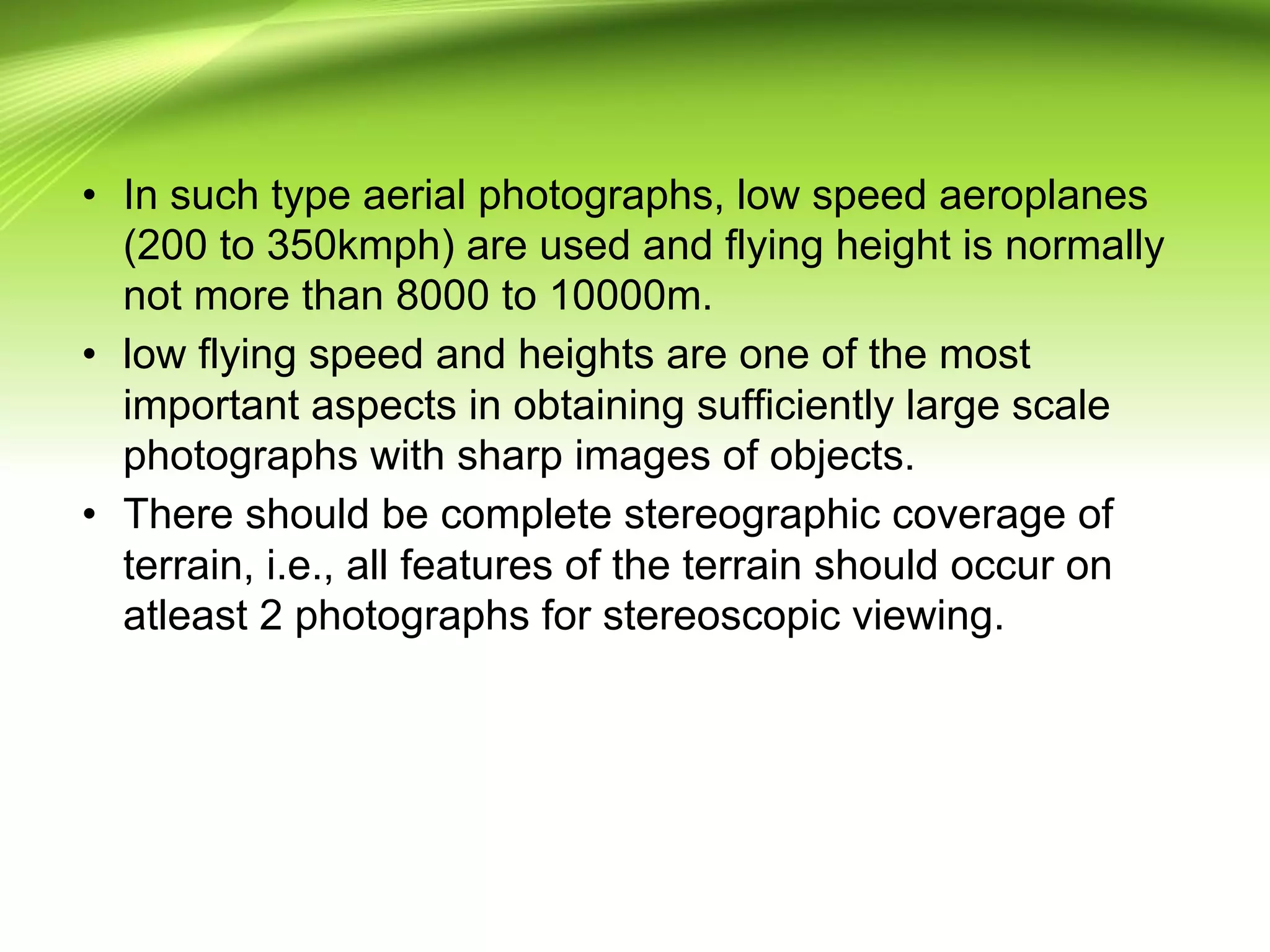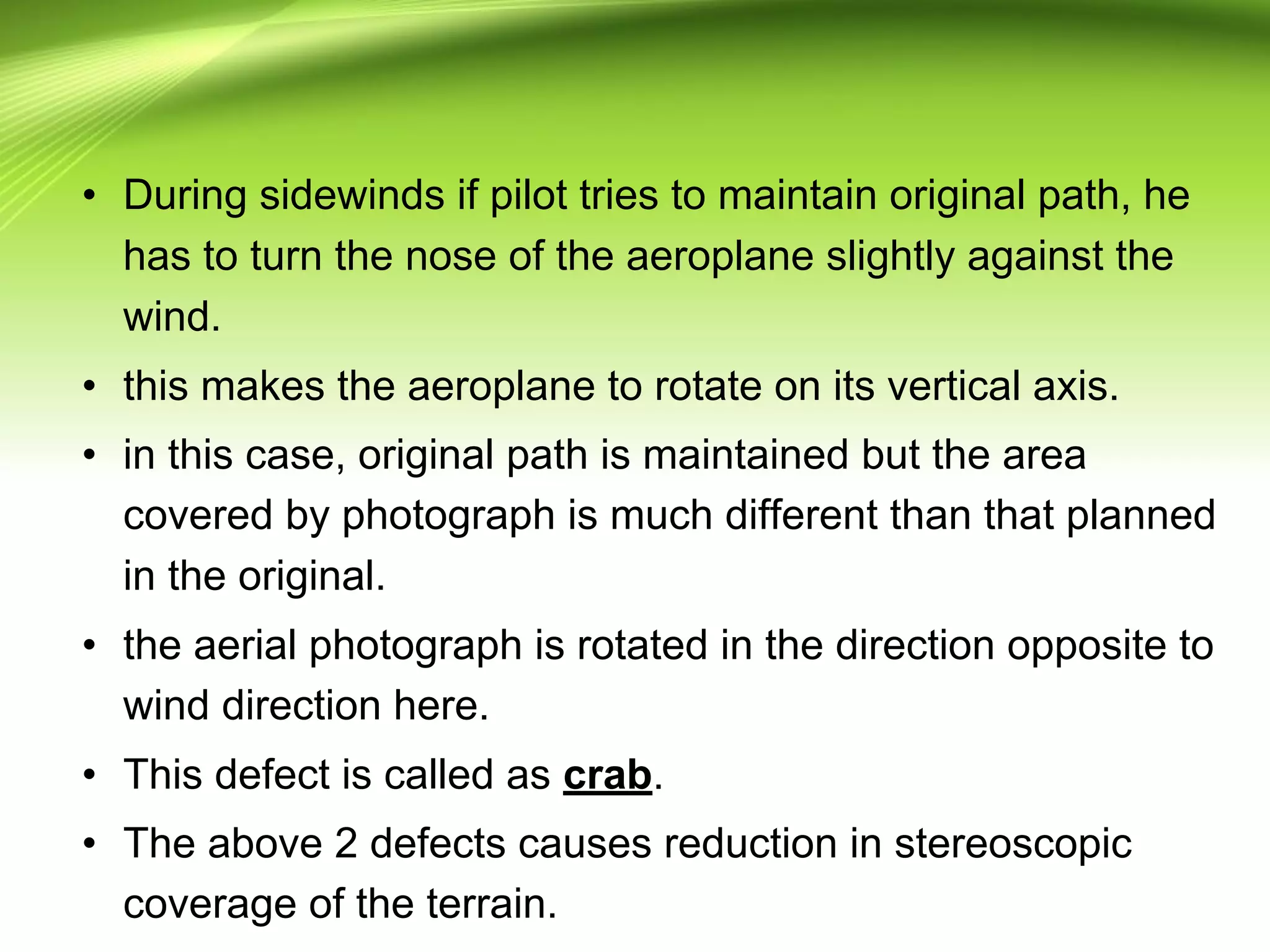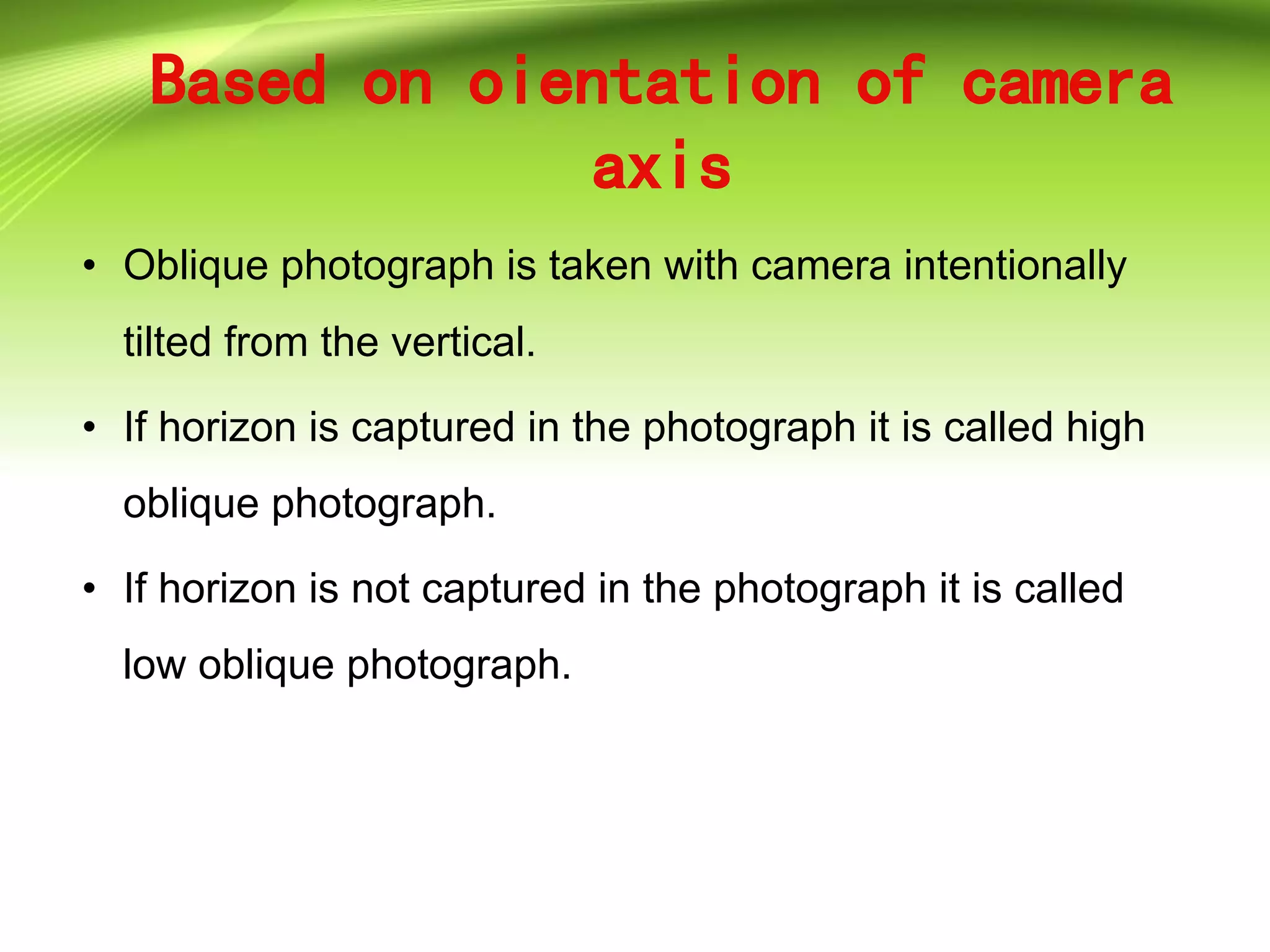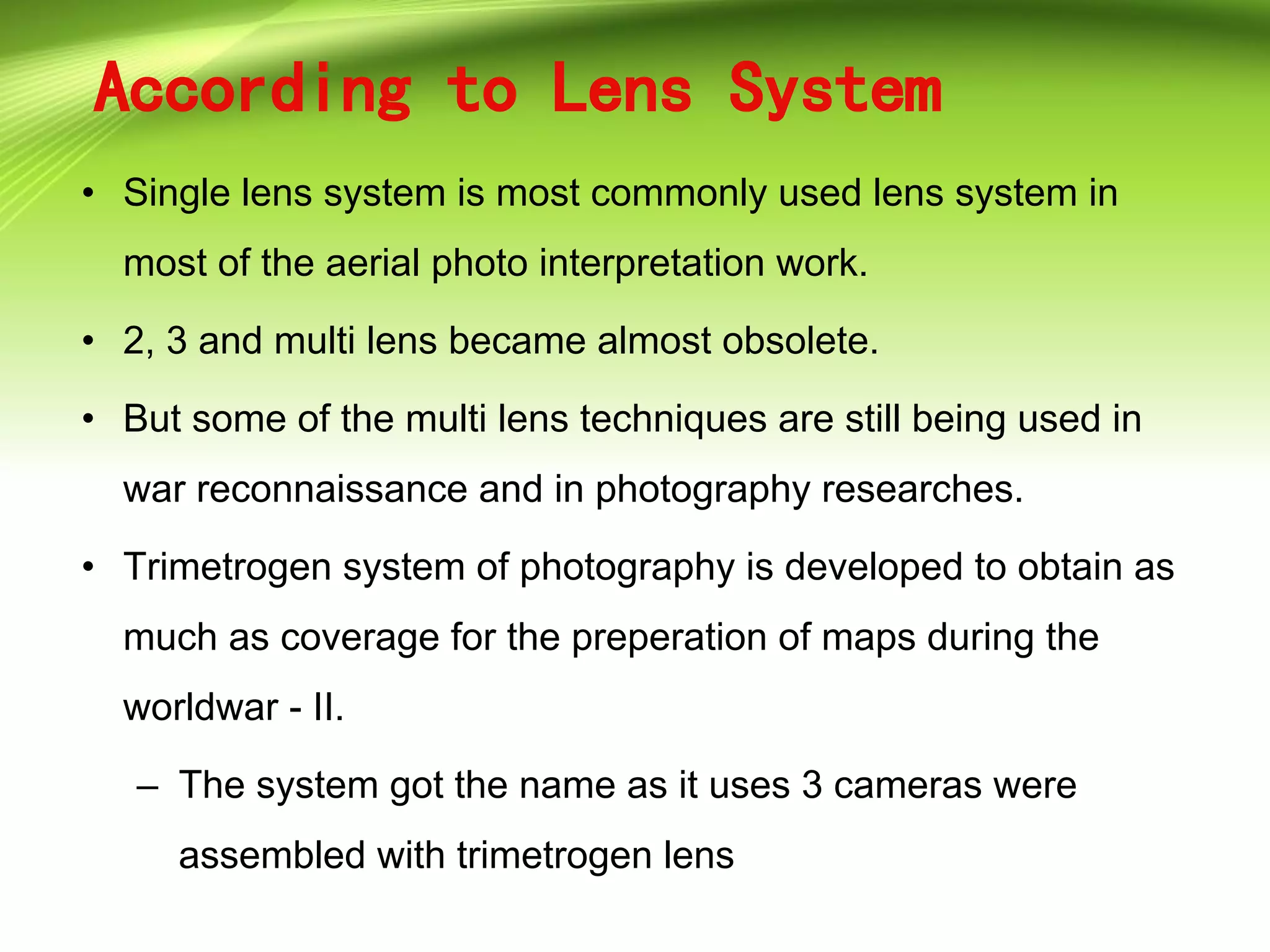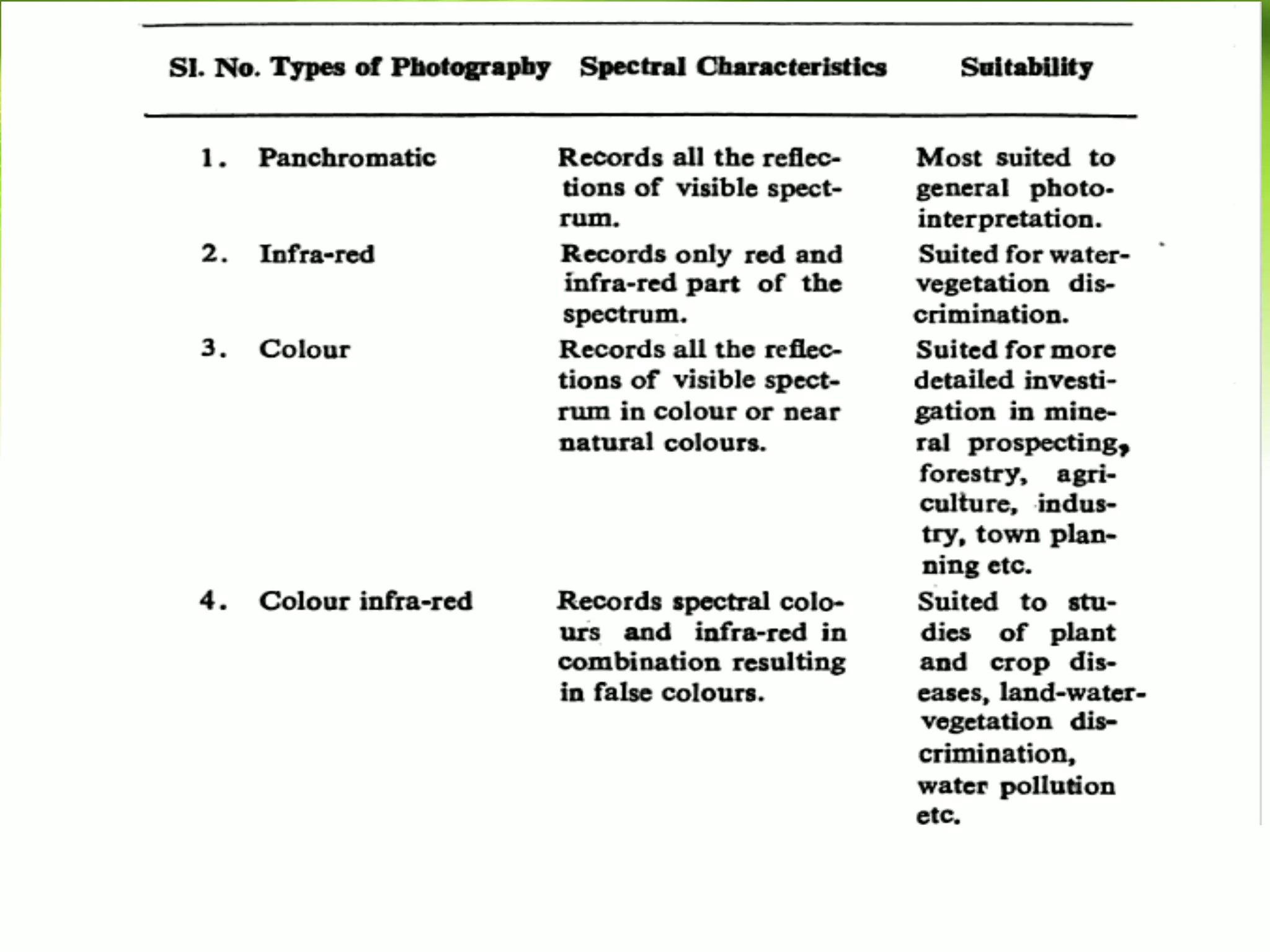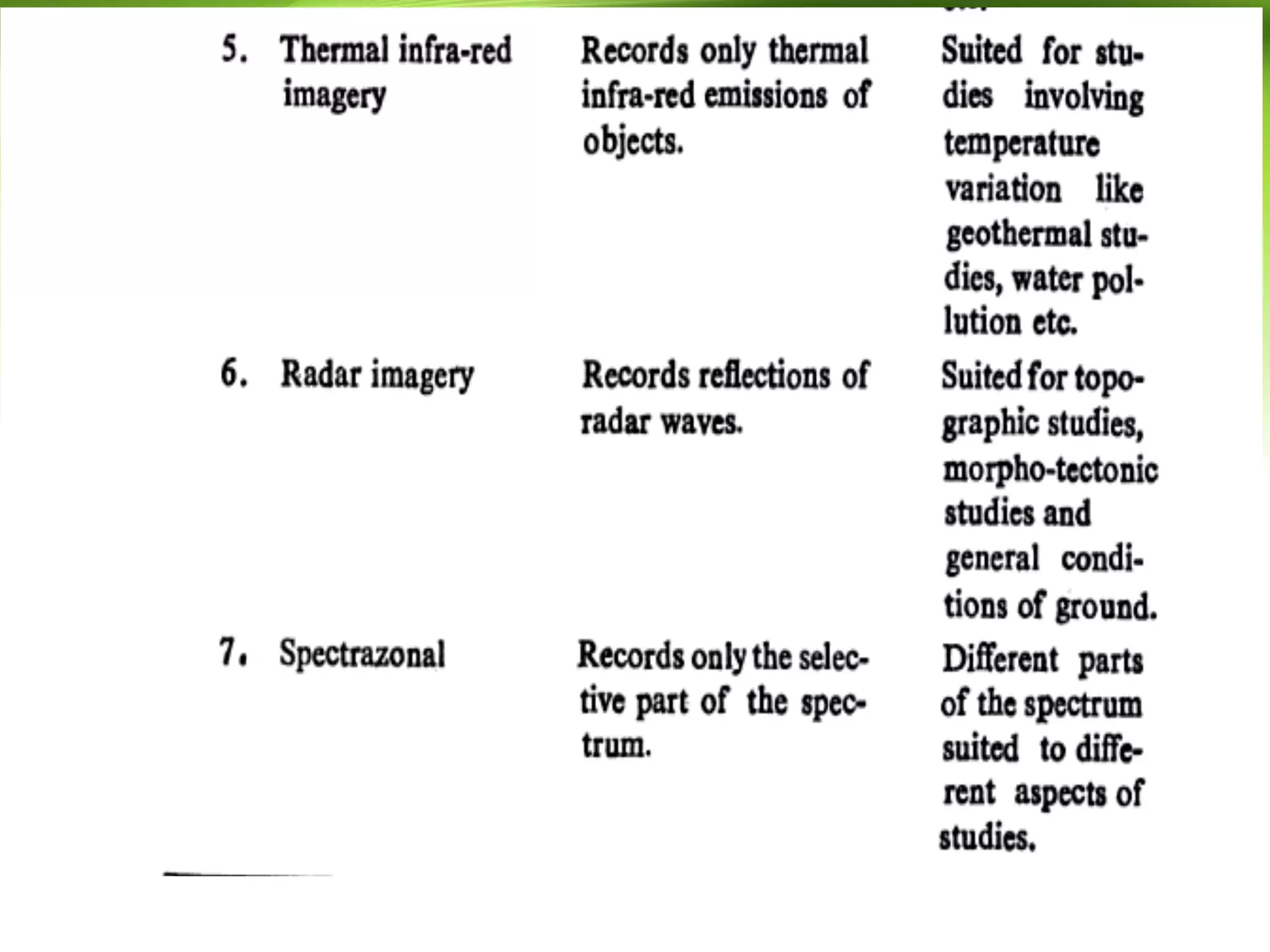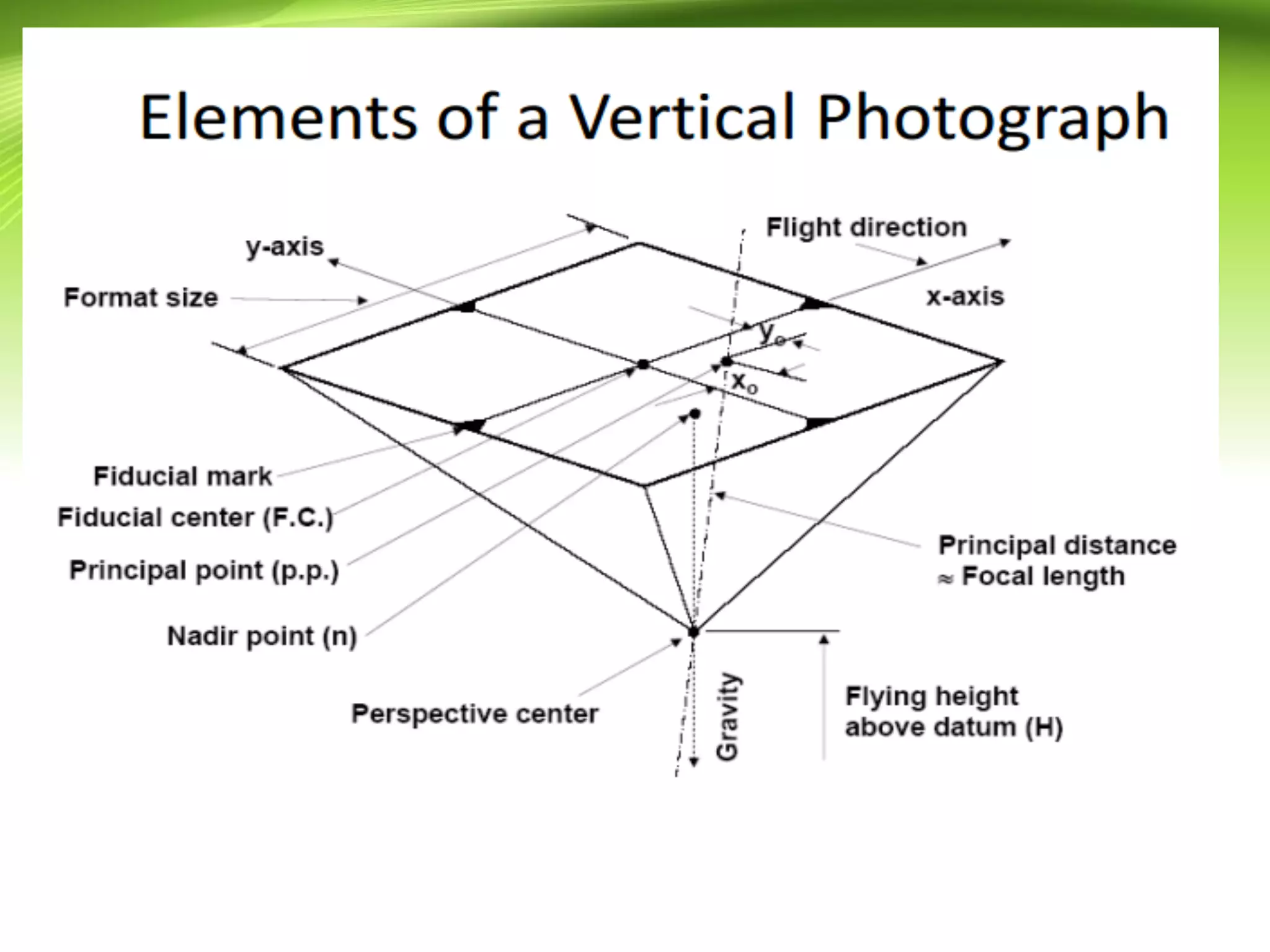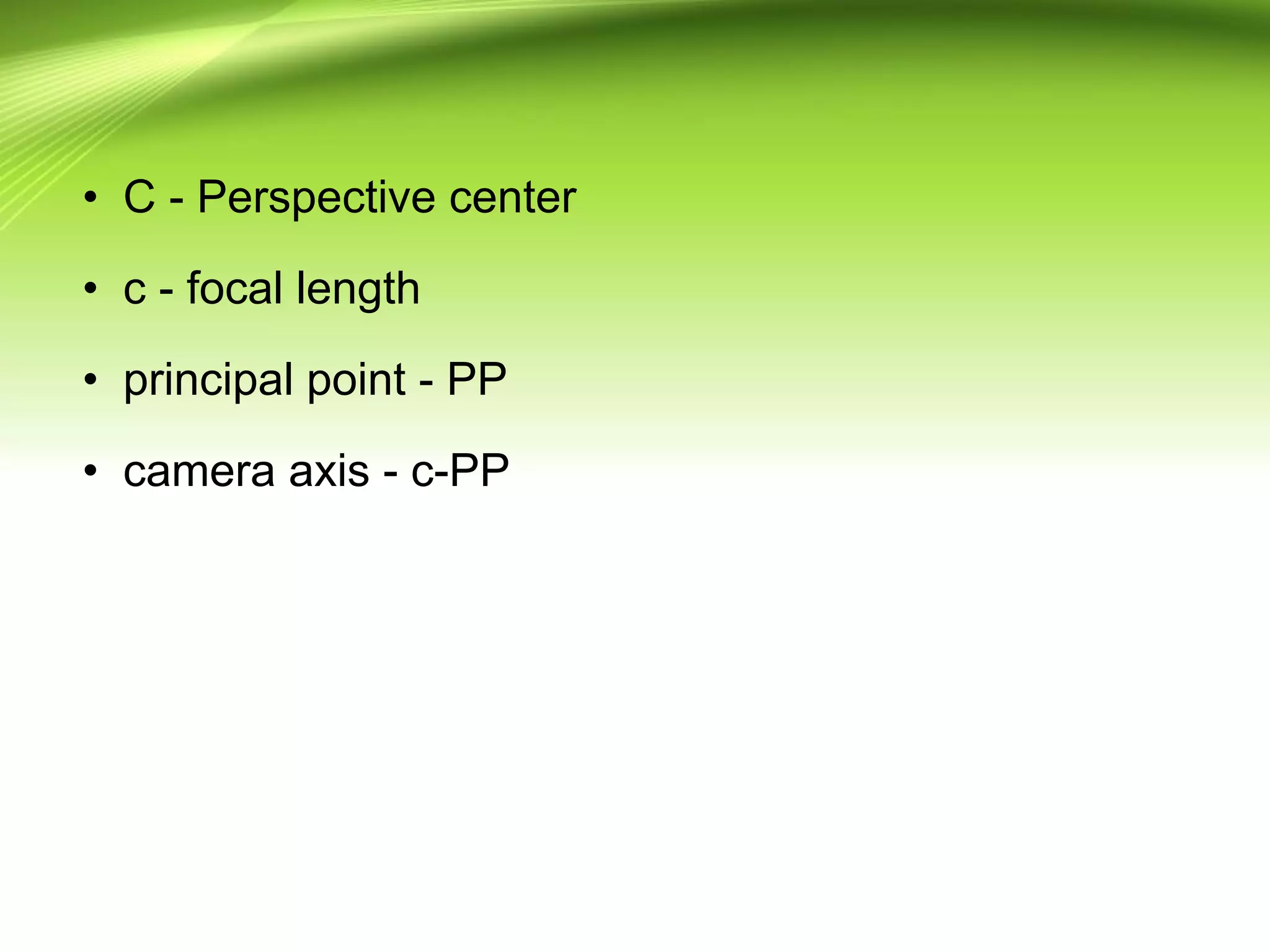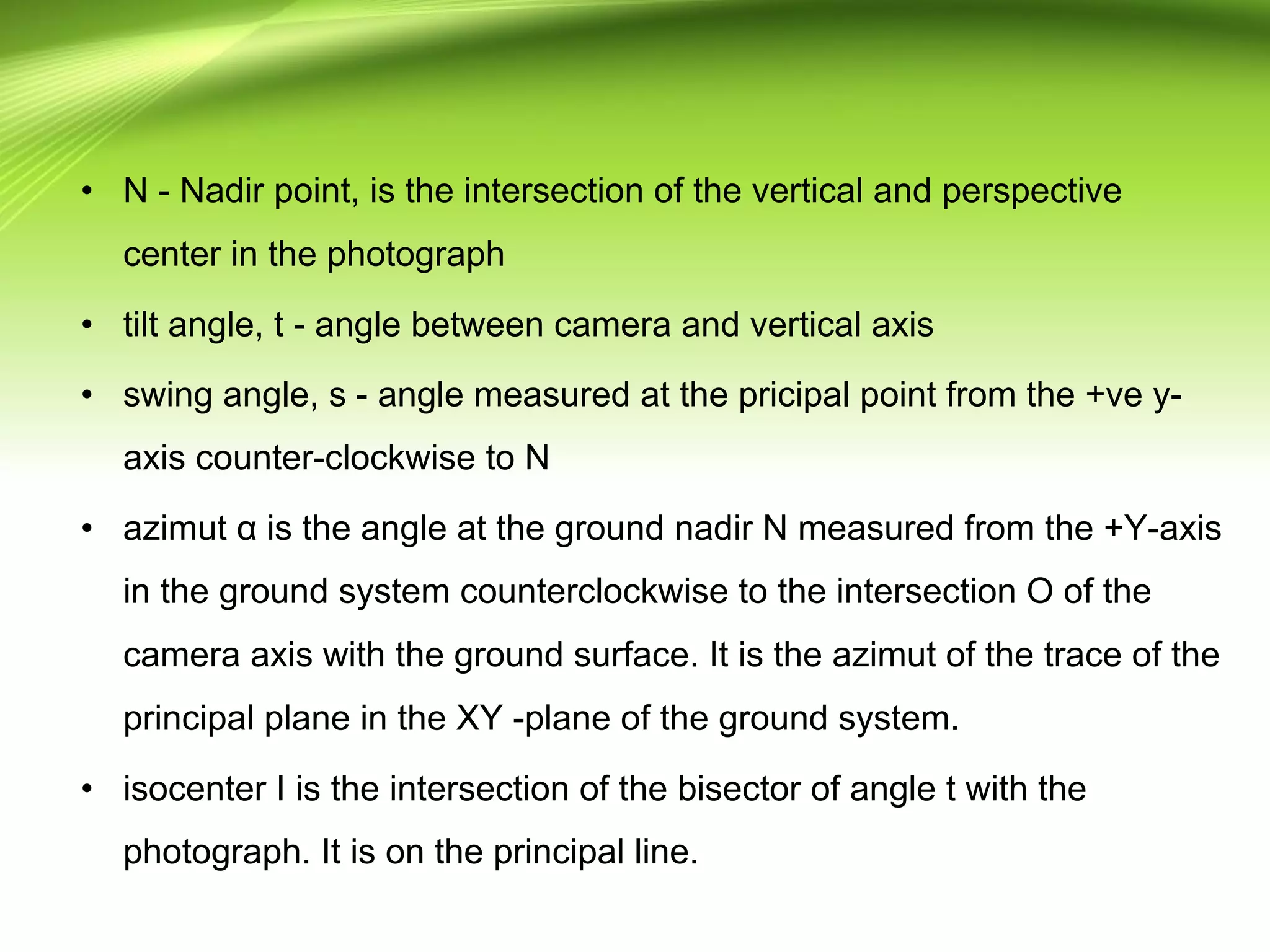The document discusses the principles and techniques of aerial photography, including the types and classifications of aerial photographs based on camera orientation, lens systems, and film properties. It highlights important factors for successful aerial photography such as flight conditions, scale selection, and the need for stereoscopic coverage. Additionally, it compares aerial photographs to maps, noting differences in projection and scale.





